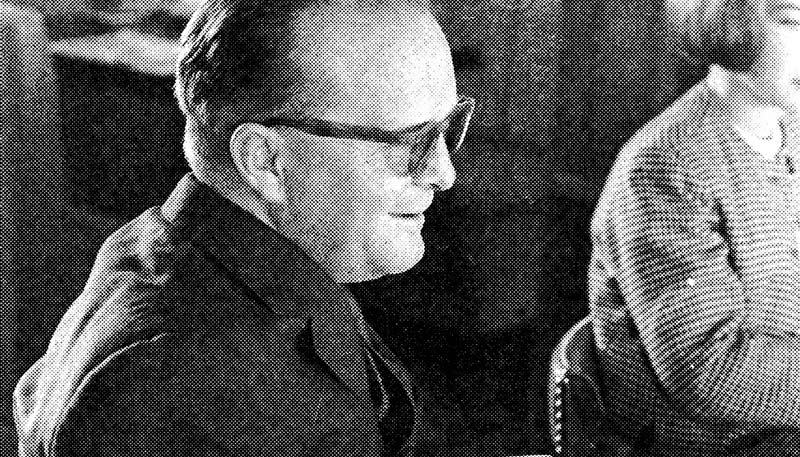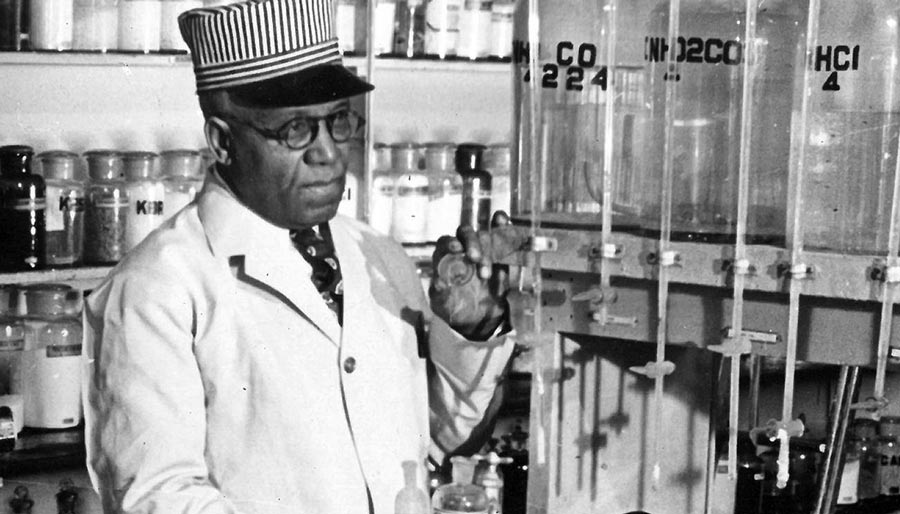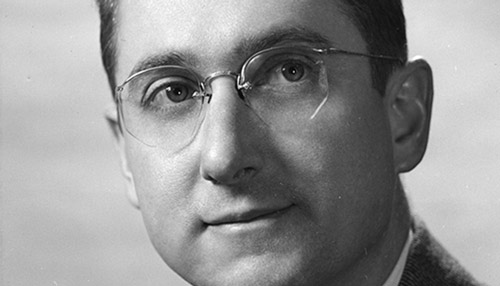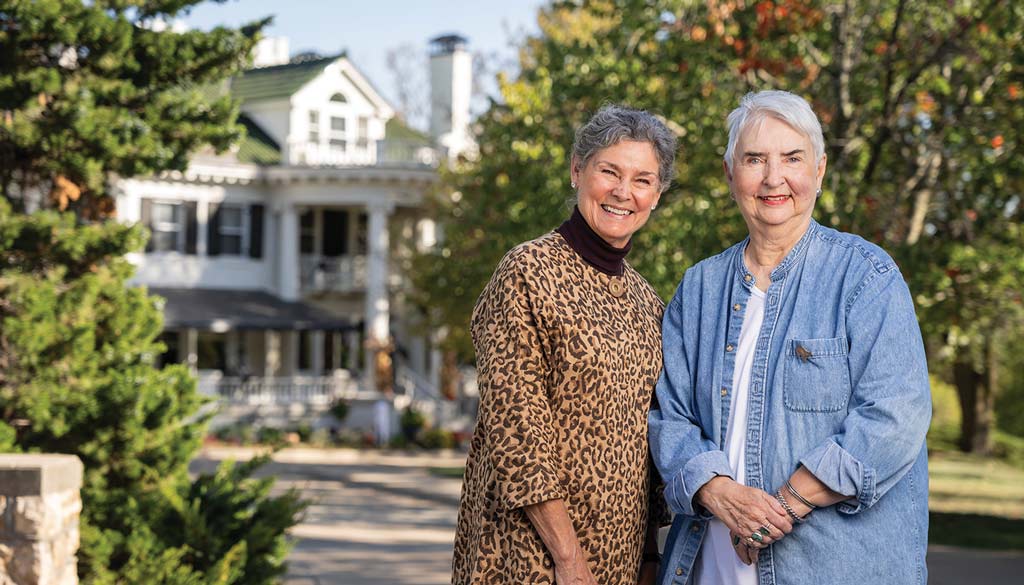Party dress: Elizabeth Miller Watkins artifact on display
Rare garment begins yet another charming chapter in Watkins’ story.
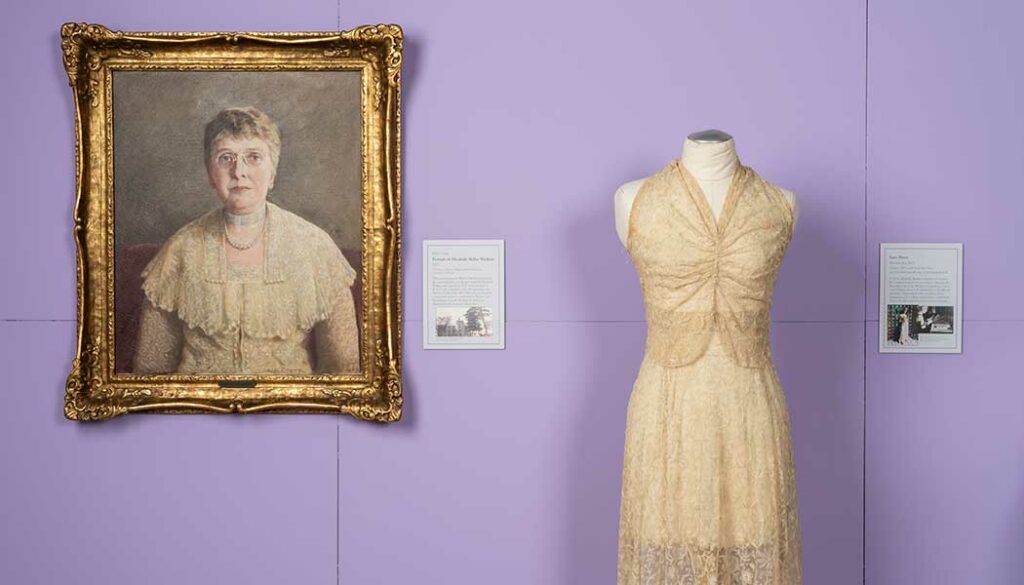
Elizabeth Miller Watkins, the grande dame of philanthropy at KU, left to the University and Lawrence immense wealth, two hospitals, two scholarship halls, the Outlook, a beautiful bank building now home to the Watkins Museum of History, and, even more invaluable, fundamental ideals that helped point our path forward: affordable student housing, imperative access to education and health care, private giving for the good of all.
What she did not leave for us, however, were the everyday items of her life, the trinkets, treasures, baubles and books that she held, wore, read. A niece emptied the Outlook after Mrs. Watkins’ 1939 death, clearing it of jewelry, furniture, paintings, dishes. Even the downtown history museum named in honor of Elizabeth and her husband, J.B., had in its collection only a single scrapbook and a few Watkins Land & Trust checks bearing her signature.
“Other than that,” says museum director Steve Nowak, “we had nothing personal of hers.”
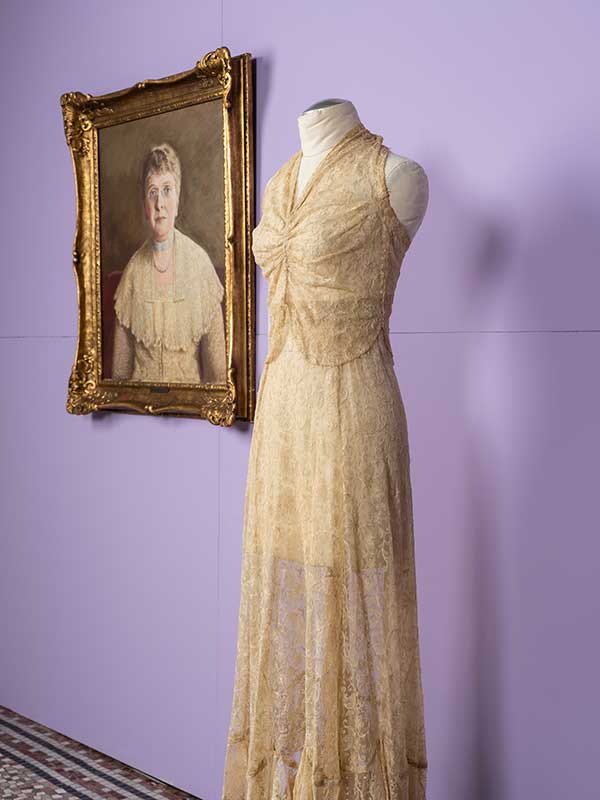
Enter the serendipitous dress—more precisely, halter top and long skirt—made of a lace unknown in modern fashions. “This is in a class all by itself,” marvels Watkins biographer Norma Decker Hoagland, c’75. “I would say you’d have to buy something by Chanel or Balenciaga or one of the Paris fashion houses to find lace of that quality. Queen Elizabeth probably had some lace dresses of that quality. Just exquisite.” Mrs. Watkins apparently had the same opinion, and treasured the dress so greatly that she chose to wear it while sitting for the portrait given to the hospital she built on campus.
The story—as researched by Hoagland—begins with the arrival on campus of Laura Holste, who in fall 1937 took out a small loan, left her family’s Ludell home, in Rawlins County, and moved into the new Miller Hall. One of 11 children, Holste had contracted polio as an infant, lost her father to the Spanish flu, and had roomed with her uncle and disabled aunt to attend school in Atwood.
Miller Hall’s housemother, during one of her daily conversations with her friend and employer, mentioned to Mrs. Watkins that a freshman from western Kansas had been invited to a campus dance but did not own a party dress. Mrs. Watkins promptly retrieved from her closet one of her favorites, with a blessing for Laura to alter it to suit her own tastes and small frame.
Laura Holste McGuire, c’41, graduated Phi Beta Kappa, married her campus sweetheart, packed the treasured dress she’d worn to four years of formal events, and raised two sons and two daughters in New Mexico.
Decades down the road, a dizzyingly intricate yet storybook-style string of events—which began when physical therapist and Watkins Hall alumna Elena Wahbeh, c’73, g’82, reconnected at a KU Medical Center event with staff physical therapist Judy McGuire, whose mother-in-law, Jean McGuire Merritt, had inherited the dress from her mother—concluded with the dress in February arriving back in Lawrence, at the museum named for its original owner.
“We forget that Mrs. Watkins was driven by a real concern for helping students, and that she didn’t just do it in an institutional way. She did it in a very personal way, and here’s a physical example,” Nowak says. “It was 1937, resources were slim, a girl got invited to a dance and didn’t have a dress to wear, and Mrs. Watkins says, ‘Here, she can have this.’ And it wasn’t just some old thing in her closet. It was special to her.”
Because of its delicate fabric, the dress will remain on display in the Watkins Museum only through June 30. Visit the remarkable artifact if you can.
“It was part of the mysterious life my mother lived before I was around,” Jean McGuire Merritt recalled in an April email to Hoagland and Wahbeh, Watkins Hall roommates. “The mother I knew didn’t dance. The mother I knew didn’t have amazingly beautiful Belgian lace dresses. But it was clearly important to her, so therefore important to me.
“I could never have imagined a better ending for this story than the one you have so carefully and beautifully created.”
Chris Lazzarino, j’86, is associate editor of Kansas Alumni magazine.
Photos by Steve Puppe
/
